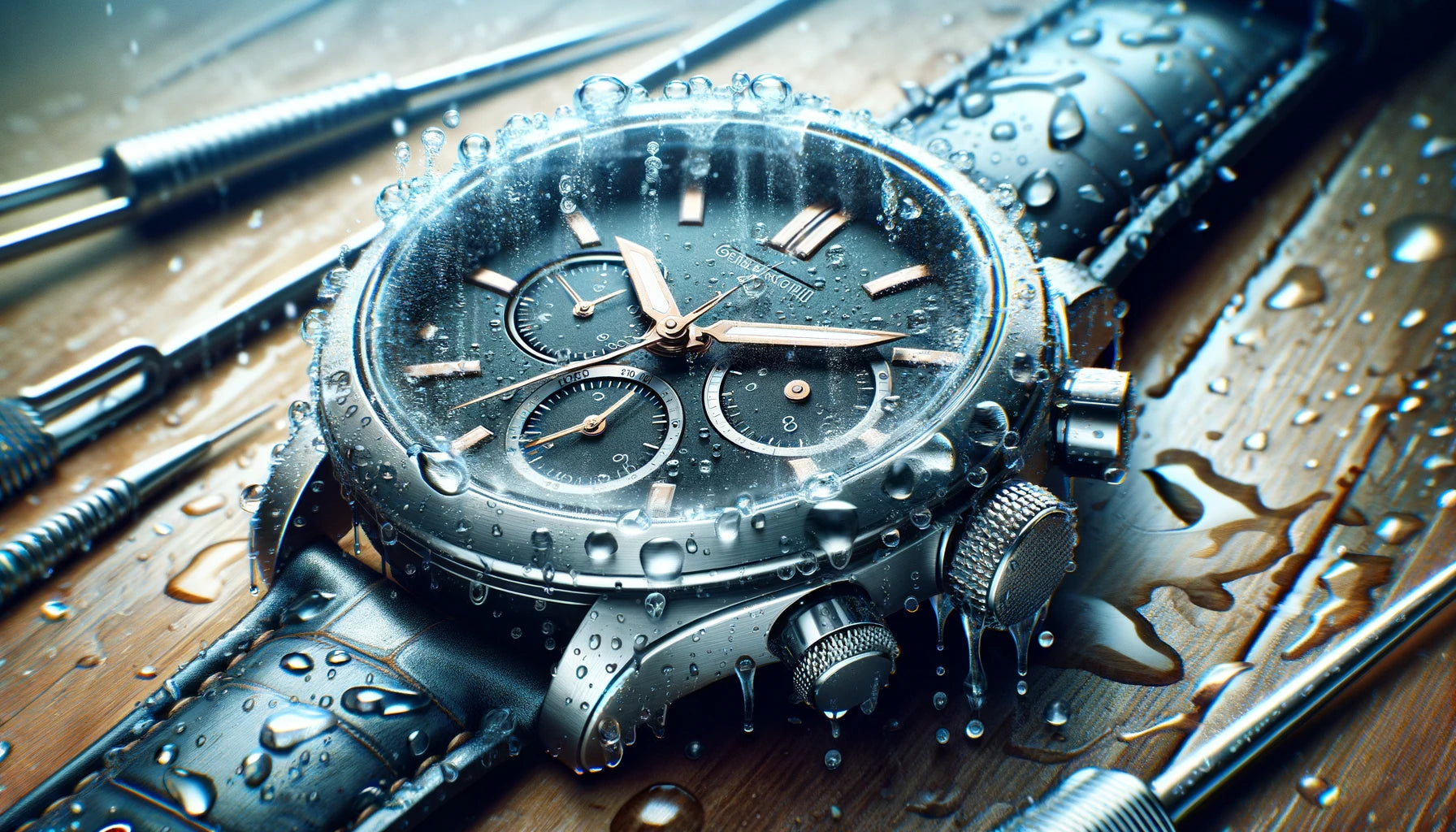
What is the best-selling watch in the world?
Which watch is the best-selling in the world among all the brands and models available on the market? We will explore...



Fogging inside a watch is a phenomenon that many watch enthusiasts and owners have encountered at least once. This veil of condensation which appears under the watch glass is not only an aesthetic inconvenience; it may also signal an underlying problem with the water resistance of your timepiece.
Understanding the causes of this condensation and how to prevent it is essential to keeping your watch in perfect working order. In this article, we'll explore everything you need to know about watch waterproofing, from the factors contributing to condensation to solutions to combat it.
Fogging inside a watch occurs when trapped moisture condenses, turning small amounts of water into vapor into tiny, visible droplets. 
This condensation can affect the aesthetics of the watch as well as its internal mechanism , potentially leading to irreparable damage. But what exactly causes this unwanted moisture?
Buying a watch box is wise to avoid scratches, protect your watches effectively today .

Several scenarios can cause fogging inside a watch:
Watches are classified by their level of waterproofing, usually measured in ATM (atmospheres) or meters, indicating how much pressure they can withstand before water begins to penetrate.

| Waterproofing Level | Recommended Activities |
|---|---|
| 3 ATM (30 meters) | Resistant to daily splashes |
| 5 ATM (50 meters) | Shower, surface swim |
| 10 ATM (100 meters) | Swimming, snorkeling |
| 20 ATM (200 meters) | Scuba diving |
| Expert Tip: Always check the water resistance of your watch after a battery change or repair, as this is often when the integrity of the water resistance can be compromised. A visit to a professional watchmaker can ensure your watch remains protected against moisture and condensation. |
Combating fogging in your watch isn't just about reacting; it is above all a preventive approach. Here are some strategies to keep your watch clear and functional:
If condensation appears on your watch, here are concrete steps to take to minimize the damage:

Regular maintenance of your watch is essential to prevent condensation problems and maintain water resistance. A professional service may include:

Regular service not only ensures that your watch is performing optimally, but it also prevents problems before they become serious. Consider this maintenance as an investment in the longevity and reliability of your watch.
Fogging can be frustrating, but understanding its causes and knowing how to prevent condensation is the key to keeping your watch in tip-top condition. By taking preventative measures and opting for regular maintenance, you can avoid the inconvenience and costs associated with repairing water damage.
Remember, a well-maintained watch is one that can accompany you faithfully year after year, marking every precious moment of your life with precision and elegance.
Q: What should I do if fog appears under the glass of my watch?
A: If condensation forms inside your watch, it is advisable to remove it from your wrist immediately to avoid worsening condensation from body heat. Consult a professional watchmaker to open the case, dry the interior, and check the water resistance of the watch, especially the seals.
Q: How can I check the water resistance of my watch?
A: The water resistance of a watch can be checked by a qualified watchmaker using specific tests, such as the pressure test in a water bell. These tests simulate different pressures to ensure that the watch remains waterproof in the conditions for which it is designed.
Q: Are all watches waterproof?
A: No, not all watches are waterproof. Water resistance depends on the design of the watch and its level of water resistance, which is usually indicated in ATM (atmospheres) or meters. Watches vary from non-water resistant to water resistant for specific activities, including professional diving.
Q: What do waterproof ratings like 3 ATM, 5 ATM, etc. mean? ?
A: Water resistance ratings indicate the level of water resistance of a watch. For example, 3 ATM means the watch is splash resistant, while 5 ATM indicates it can be worn for surface swimming. Higher ratings like 10 ATM or 20 ATM are appropriate for snorkeling and scuba diving, respectively.
Q: How do I maintain the water resistance of my watch?
A: To maintain the water resistance of your watch, avoid extreme temperature changes, do not handle the crown or buttons underwater, and have your watch serviced regularly by a professional, especially for the replacement of the waterproof gaskets .

Which watch is the best-selling in the world among all the brands and models available on the market? We will explore...

The world of watch boxes offers a multitude of options to meet various needs and preferences. From a simple storage box to...

It leaves no trace. No scratches, no dents. Nothing visible. And yet, magnetism is one of the quietest enemies of your automatic watch. ...
2 comments
Bonsoir je vous remercie avoir pour la montre digitale pris la bue.merci.
Avronsart Thierry
pourriez vous nous conseiller des horlogers s’il vous plait
ilyan
Leave a comment
This site is protected by hCaptcha and the hCaptcha Privacy Policy and Terms of Service apply.